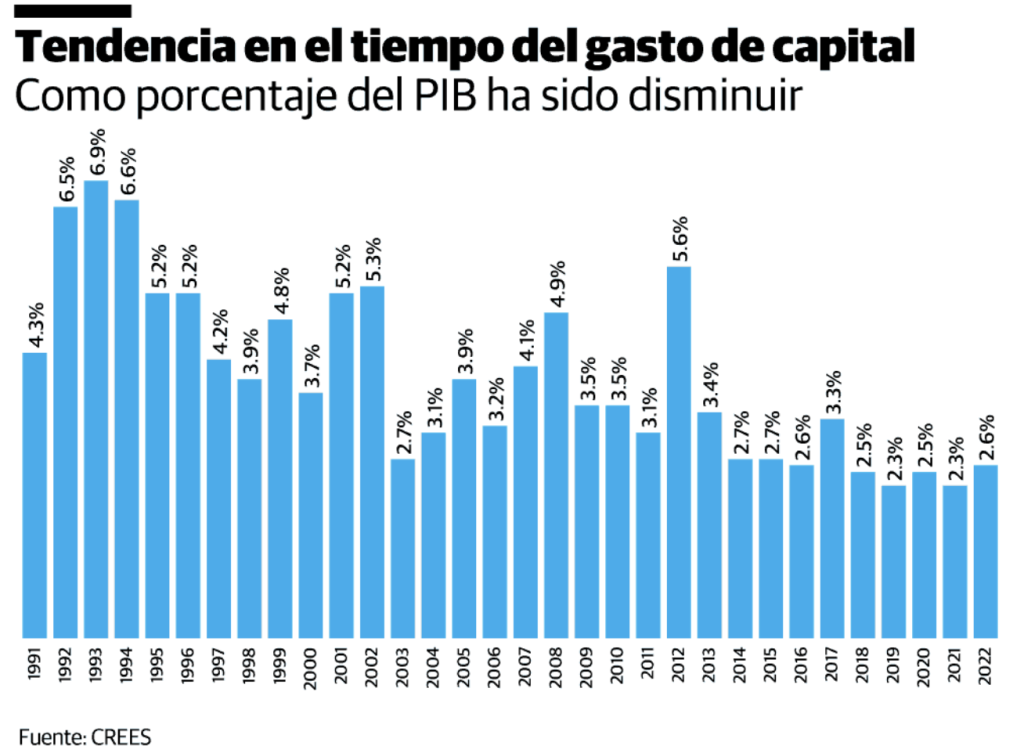
The Abinader administration has budgeted RD$38 billion for infrastructure works in 2023. Spending this year is slow, with 16.3% of that total spent as of 24 March 2023, as reported in Diario Libre.
Diario Libre reports that last year the Abinader administration spent 2.6% of the gross domestic product on infrastructure works. This is considerably down from 6.9% in 1994, the year of most spending from 1991 to 2022, according to data released by the Regional Center for Sustainable Economic Strategies (Crees).
The entity indicates in a recent analysis that there has been a consistent downward trend over time of capital spending as a percentage of GDP. “Since 2013, that is, in the last 10 years, the average expenditure has been 2.7%. The last time a spending level above 5% was verified, was in 2012, a year in which public finances were marked by the electoral cycle.”
Diario Libre reports that at the end of December 2022, the Central Bank of the Dominican Republic had reported that public capital spending was lower than budgeted in that year and its execution slower than expected, impacting the moderation of the growth rate of the construction sector. This sector was also affected by the increase in the prices of inputs such as cement, rebar and paint, and a readjustment of construction schedules due to the effect of higher interest rates.
The director of the General Budget Agency (Digepres), José Rijo Presbot does not agree with the Central Bank statement at the time. He told Diario Libre that, when this analysis was made, the entire budget for that year had not yet been executed. In addition, he defended that the government has spent differently at a time of economic crisis due to the pandemic and the war between Russia and Ukraine. “It’s a very irresponsible act not to recognize that the world is in a war economy,” he says.
“If I put, compared 2022 with total spending in 2022, it’s going to give me 13.5 (percent), but if I take away from that spending the current spending associated with the war: fuel subsidy, fertilizer subsidy, electricity subsidy…, we’re talking about almost RD$117 billion of current spending resulting from the war. Therefore, capital expenditure in relation to total real expenditure exceeds 15, 16%…. In other words, we have had a relatively significant growth in capital spending,” said Rijo Presbot.
Read more in Spanish:
Diario Libre
3 April 2023

